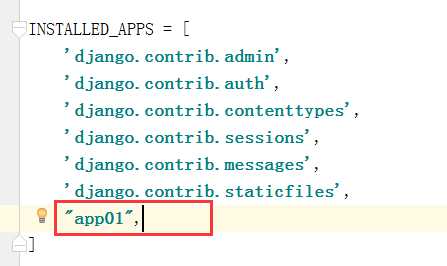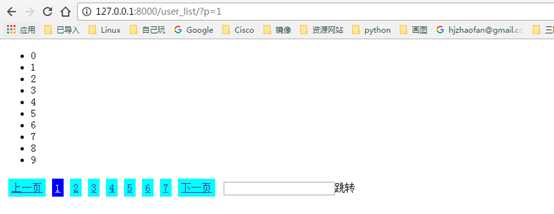标签:library 传递参数 理解 for 传递 not ssi his 目录
首先Django中包含了很多内置的方法:
这里通过lower实现
在views视图函数中写如下代码:
def tp3(request): name= "ABCDEFG" return render(request,"tp3.html",{"name":name})
在urls路由关系中添加如下:
url(r‘^tp3/‘,views.tp3),
在tp3页面中写如下:
{{ name }}
{{ name|lower }}
最后效果如下:

使用simple_tag的方法:
1、 在app下创建templatetags目录
2、 创建py文件
3、 创建template对象register
4、 @register.simple_tag
def func()
如果函数有参数:
def func(a1,a2)
5、 在settings配置文件注册app
6、 在页面文件顶部{%load py文件%},如果存在继承,这个要放在继承下面
7、 最后在页面使用的时候{% func %},如果有参数
{%func 2 3 %}
这里有几个问题需要注意:
1、 在app下创建templatetags目录必须为templatetags不能更改
2、 创建py文件的时候名字可以随便定义
3、 在py文件中必须写如下代码:
from django import template from django.utils.safestring import mark_safe register = template.Library() @register.simple_tag
这四行代码必须有,并且的template对象register名字不能更改
按照上面的规则,在app下创建templatetags目录
然后创建一个test.py文件,代码如下:
#AUTHOR:FAN from django import template from django.utils.safestring import mark_safe register = template.Library() @register.simple_tag def func(): return 123
并在setting中添加:

tp3.html中代码如下(注意高亮部分):
{% load test %} <!DOCTYPE html> <html lang="en"> <head> <meta charset="UTF-8"> <title>Title</title> </head> <body> {{ name }} {{ name|lower }} {% func %} </body> </html>
最后效果如下:

我们将test中的func改成传递参数的,如下所示:
def func(a1,a2):
return a1+a2
在tp3.html中传递参数:
{% func 5 3 %}
结果如下:

filter和simple_tag的方法基本一样,只需要做如下修改:
将test.py文件中@register.simple_tag替换为@register.filter
在页面中代码改为:
{{ "zhaofan" |func:"赵凡" }}
这样最终在页面的效果如下:

而这里对比filter和simple_tag,我们可以发现各有优缺点
1、其中fileter可以放在模板语言中的if条件中,而simple_tag则不能如:
{% if "zhaofan" |func:"赵凡" %}
{% endif %}
2、filter参数固定,simple_tag参数任意
在前端防止因为xss而现实字符串的可以通{{ page_str|save}}
后端:可以通过导入from django.utils.safestring import mark_safe,然后page_str = mark_safe(page_str)
通过下面例子用于理解分页
这里将分页的功能封装了一个类,改类内容如下:
#AUTHOR:FAN from django.utils.safestring import mark_safe class Page: def __init__(self,current_page,data_count,per_page_count=10,page_num = 7): ‘‘‘ :param current_page: 当前页 :param data_count: 数据的总数目 :param per_page_count: 每页显示的数目 :param page_num: 显示几页内容 ‘‘‘ self.current_page = current_page self.data_count = data_count self.per_page_count=per_page_count self.page_num = page_num @property def start(self): ‘‘‘ :return: 返回得到起始 ‘‘‘ return (self.current_page-1)*self.per_page_count @property def end(self): ‘‘‘ :return: 返回结束 ‘‘‘ return self.current_page*self.per_page_count @property def total_count(self): ‘‘‘ :return: 返回总页数 ‘‘‘ v, y = divmod(self.data_count, self.per_page_count) if y: v += 1 return v def page_str(self,base_url): ‘‘‘ :param base_url: 这里是用于自定义url前缀 :return: 返回的为页面下端要显示的跳转页的html语言的字符串 ‘‘‘ page_list = [] if self.total_count < self.page_num: start_index = 1 end_index = self.total_count + 1 else: if self.current_page <= (self.page_num + 1) / 2: start_index = 1 end_index = self.page_num + 1 else: start_index = self.current_page - (self.page_num - 1) / 2 end_index = self.current_page + (self.page_num + 1) / 2 if self.current_page + (self.page_num + 1) / 2 > self.total_count: end_index = self.total_count + 1 start_index = self.total_count - self.page_num + 1 if self.current_page == 1: prev = ‘<a class="page" href="#">上一页</a>‘ else: prev = ‘<a class="page" href="%s?p=%s">上一页</a>‘ % (base_url,self.current_page - 1) page_list.append(prev) for i in range(int(start_index), int(end_index)): if i == self.current_page: temp = ‘<a class="page active" href="%s?p=%s">%s</a>‘ % (base_url,i, i) else: temp = ‘<a class="page" href="%s?p=%s">%s</a>‘ % (base_url,i, i) page_list.append(temp) if self.current_page == self.total_count: nex = ‘<a class="page" href="#">下一页</a>‘ else: nex = ‘<a class="page" href="%s?p=%s">下一页</a>‘ % (base_url,self.current_page + 1) page_list.append(nex) go_page = """ <input type=‘text‘ /><a onclick="jumpTo(this,‘%s?p=‘);">跳转</a> <script> function jumpTo(ths,base){ var val = ths.previousSibling.value; location.href = base + val; } </script> """ %(base_url) page_list.append(go_page) page_str = "".join(page_list) page_str = mark_safe(page_str) return page_str
在views函数中调用:
from utils import pagination def user_list(request): current_page = request.GET.get("p",1) current_page = int(current_page) page_obj = pagination.Page(current_page,len(LI)) data = LI[page_obj.start:page_obj.end] page_str = page_obj.page_str("/user_list/") return render(request,"user_list.html",{"data":data,"page_str":page_str})
最终的效果如下:

客户端浏览器上的一个文件
以字典的方式存在
通常很多网站登录之后,网站的右上角会显示当前用户的用户名,实现例子如下:
views里写如下代码:
def login(request): print(request.method) if request.method=="GET": return render(request,"login.html") if request.method =="POST": u = request.POST.get("username") p = request.POST.get("pwd") dic = user_info.get(u) print(u,p) if not dic: return render(request,"login.html") if dic["pwd"] == p: res = redirect("/index") res.set_cookie(‘username1‘,u) return res else: return render(request, "login.html") def index(request): #获取当前登录的用户名 v = request.COOKIES.get("username1") if not v: return redirect("/login") return render(request,"index.html",{"current_user":v})
这样用户如果没有登录的情况下就不能直接访问index页面了
,并且如果用户登录之后也能显示当前用户的用户名,也就是实现了用户认证
设置Cookie:
res.set_cookie(key,value)
参数:
key 键
value=‘’ 值
max_age=None 超时时间,以秒作为单位。默认是关闭浏览器失效
expires=None 超时时间,这个是可以设置datatime
path="/" Cookie生效的路径
domain=None Cookie生效的域名
secure=False https传输
httponly=False 只能http协议传输,无法被JavaScript获取
user_list.html代码如下:
<!DOCTYPE html> <html lang="en"> <head> <meta charset="UTF-8"> <title>Title</title> <style> .pagination .page{ display: inline-block; padding: 5px; background-color: cyan; margin: 5px; } .pagination .active{ background-color: blue; color: white; } </style> </head> <body> <ul> {% for item in data %} {% include ‘li.html‘ %} {% endfor %} </ul> <div> <select id="ps" onchange="changePageSize(this)"> <option value="10">10</option> <option value="20">20</option> <option value="30">30</option> <option value="40">40</option> </select> </div> <div class="pagination"> {{ page_str }} </div> <script src="/static/jquery-1.12.4.js"></script> <script src="/static/jquery.cookie.js"></script> <script> $(function () { var v = $.cookie("per_page_count"); $("#ps").val(v); }); function changePageSize(ths) { var v = $(ths).val(); console.log(v); $.cookie("per_page_count",v); location.reload() } </script> </body> </html>

页面效果如上,实现的功能是当通过下拉框选择不同的选项时,即每页显示的数量,这里利用了jquery的cookie,jquery.cookie.js
前文中我们通过
res.set_cookie(‘username1‘,u)
设置cookie,其实还有一种加密的方式,即:
res.set_signed_cookie("username1",u,salt="jiami")
通过salt这个参数实现加密,同样的获取cookie的时候也需要加上salt参数才能进行解密
我们前面代码中:
def index(request): #获取当前登录的用户名 v = request.COOKIES.get("username1") if not v: return redirect("/login") return render(request,"index.html",{"current_user":v})
如果我们有多页面都需要判断用户是否登录,如果每个都这样写就需要写很多遍,所以这里我们可以通过装饰器实现
将上述代码进行更改:
def auth(func): def inner(request,*args,**kwargs): v = request.COOKIES.get("username1") if not v: return redirect("/login") return func(request,*args,**kwargs) return inner @auth def index(request): #获取当前登录的用户名 v = request.COOKIES.get("username1") return render(request,"index.html",{"current_user":v})
下面是一个普通的CBV用法例子:
from django import views class Order(views.View): def get(self,request): v = request.COOKIES.get("username1") if not v: return redirect("/login") return render(request, "index.html", {"current_user": v}) def post(self,request): v = request.COOKIES.get("username1") return render(request, "index.html", {"current_user": v})
如果我们只对get请求做认证
def auth(func): def inner(request,*args,**kwargs): v = request.COOKIES.get("username1") if not v: return redirect("/login") return func(request,*args,**kwargs) return inner from django import views from django.utils.decorators import method_decorator class Order(views.View): @method_decorator(auth) def get(self,request): v = request.COOKIES.get("username1") return render(request, "index.html", {"current_user": v}) def post(self,request): v = request.COOKIES.get("username1") return render(request, "index.html", {"current_user": v})
这样当访问order的时候就加上了验证功能
但是这样是只给get方法加验证,如果想要给更多得方法加验证的时候,通过下面方法实现:
def auth(func): def inner(request,*args,**kwargs): v = request.COOKIES.get("username1") if not v: return redirect("/login") return func(request,*args,**kwargs) return inner from django import views from django.utils.decorators import method_decorator class Order(views.View): @method_decorator(auth) def dispatch(self, request, *args, **kwargs): return super(Order,self).dispatch(request, *args, **kwargs) def get(self,request): v = request.COOKIES.get("username1") return render(request, "index.html", {"current_user": v}) def post(self,request): v = request.COOKIES.get("username1") return render(request, "index.html", {"current_user": v})
因为CBV每次需要先执行一个dispatch方法,我们在dispatch方法上加认证,这样就相当于在所有的上面加上了认证
但是这种方法有人会觉得多写了一个dispatch方法,可以将其简化为:
@method_decorator(auth,name="dispatch") class Order(views.View): def get(self,request): v = request.COOKIES.get("username1") return render(request, "index.html", {"current_user": v}) def post(self,request): v = request.COOKIES.get("username1") return render(request, "index.html", {"current_user": v})
simple_tag,filte,分页以及cookie和装饰器
标签:library 传递参数 理解 for 传递 not ssi his 目录
原文地址:http://www.cnblogs.com/zhaof/p/6253130.html